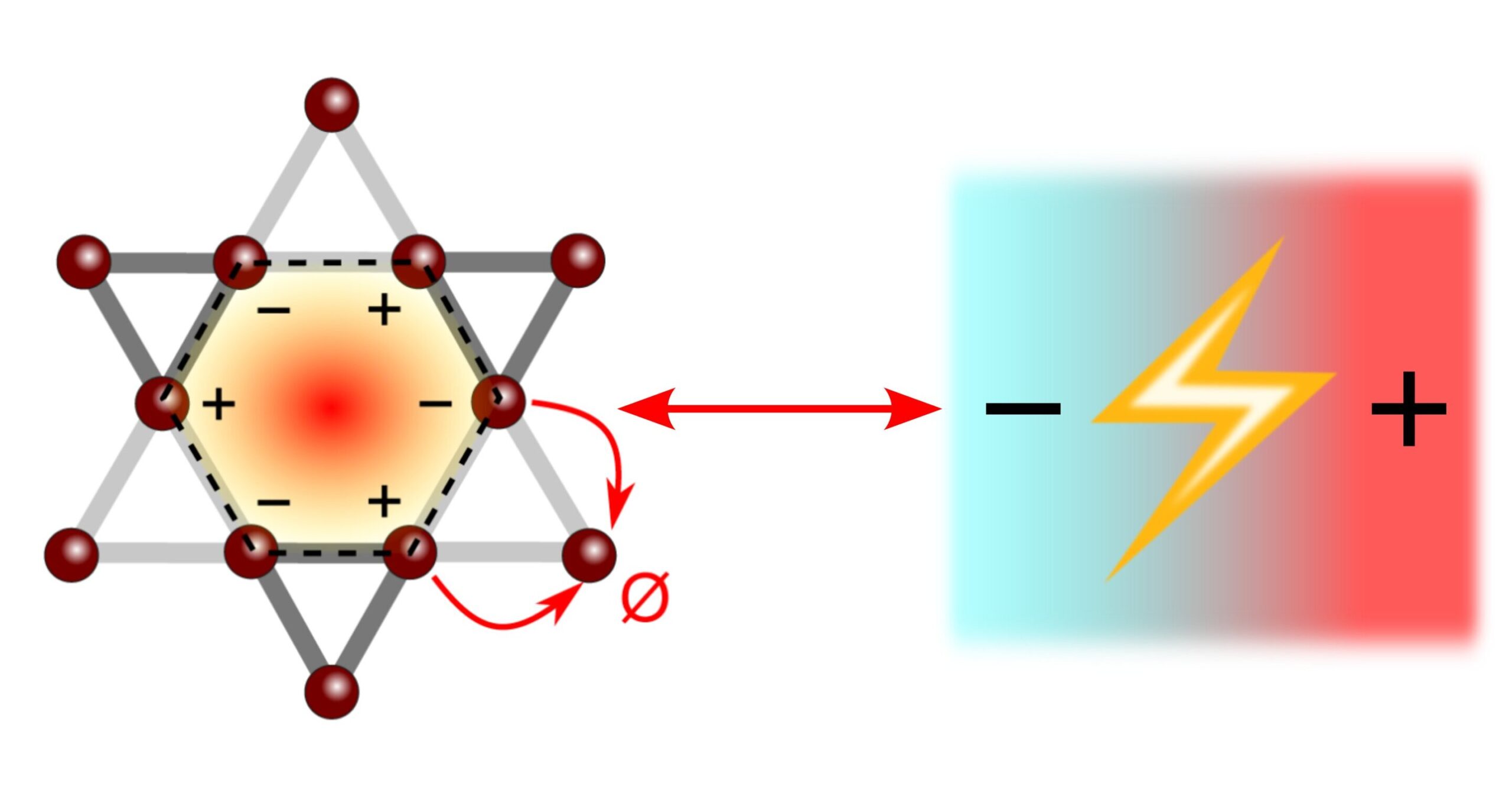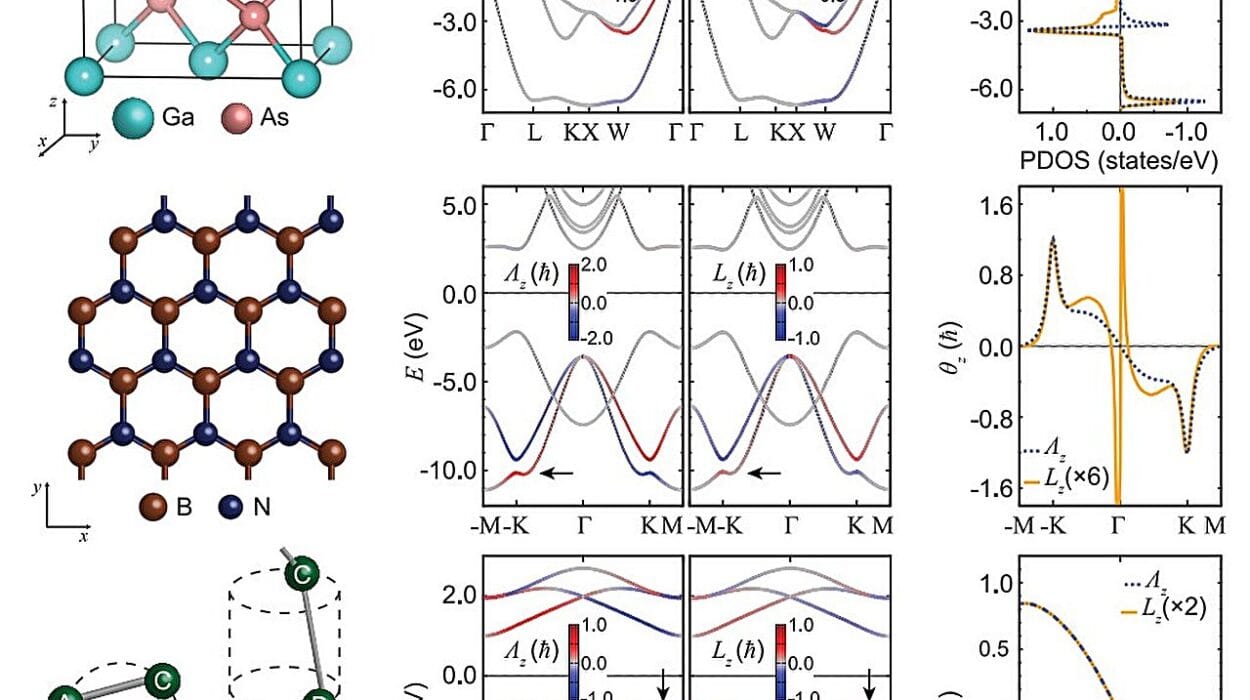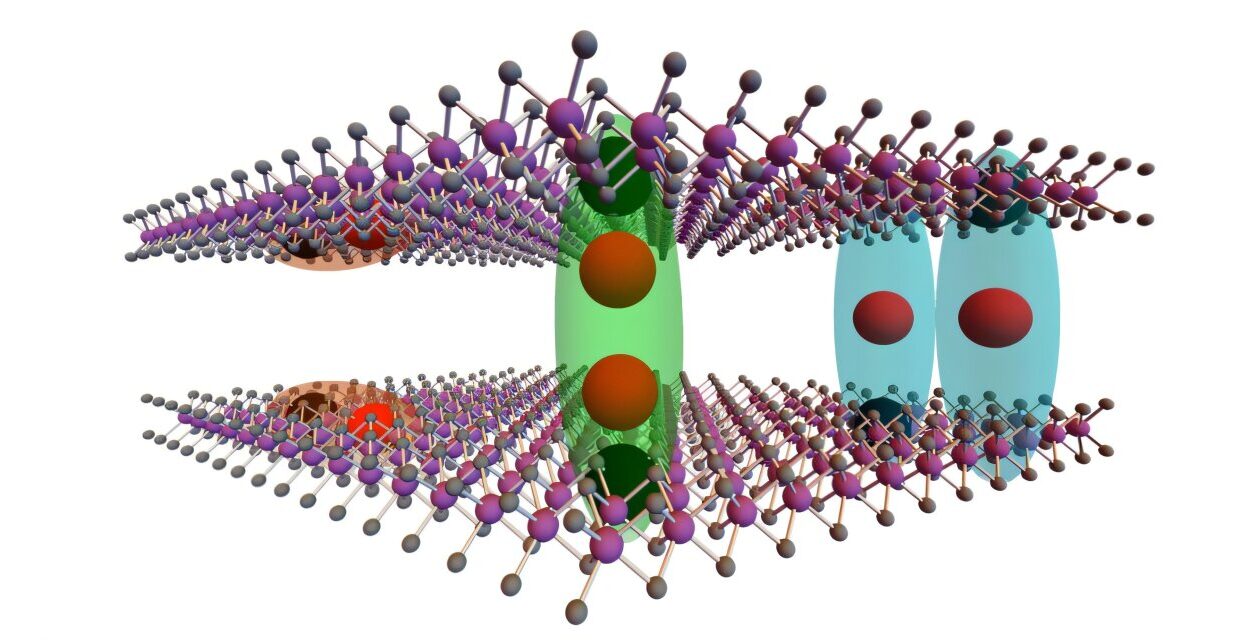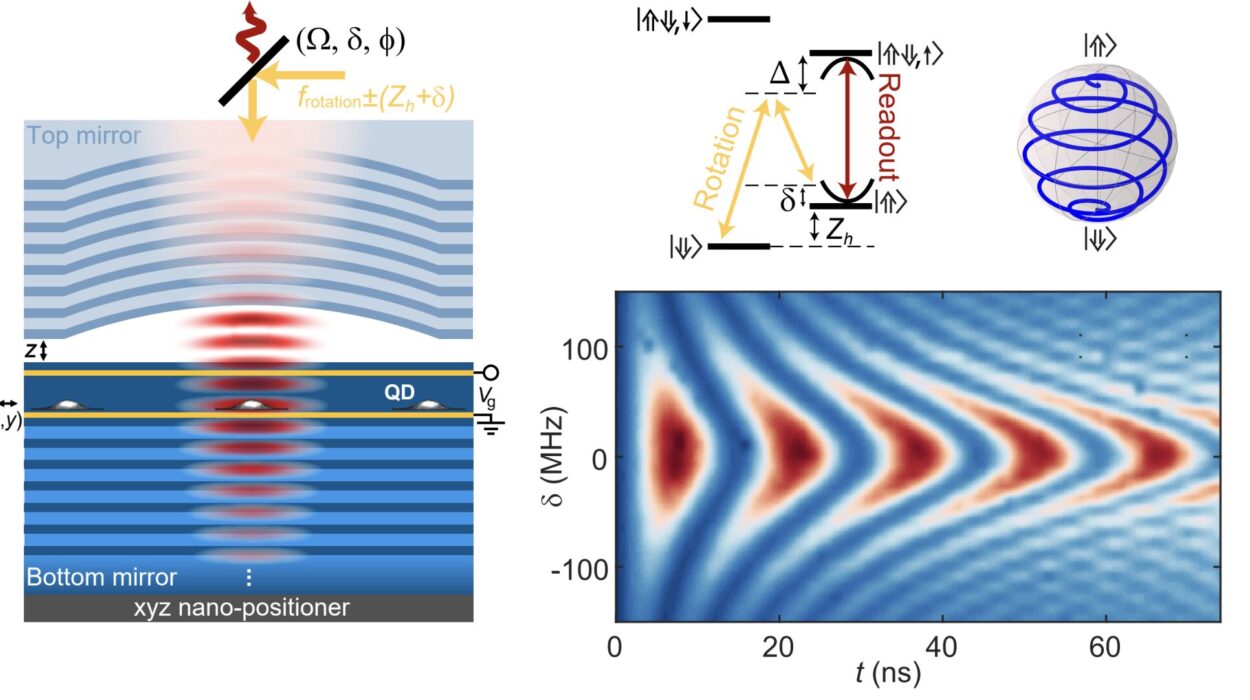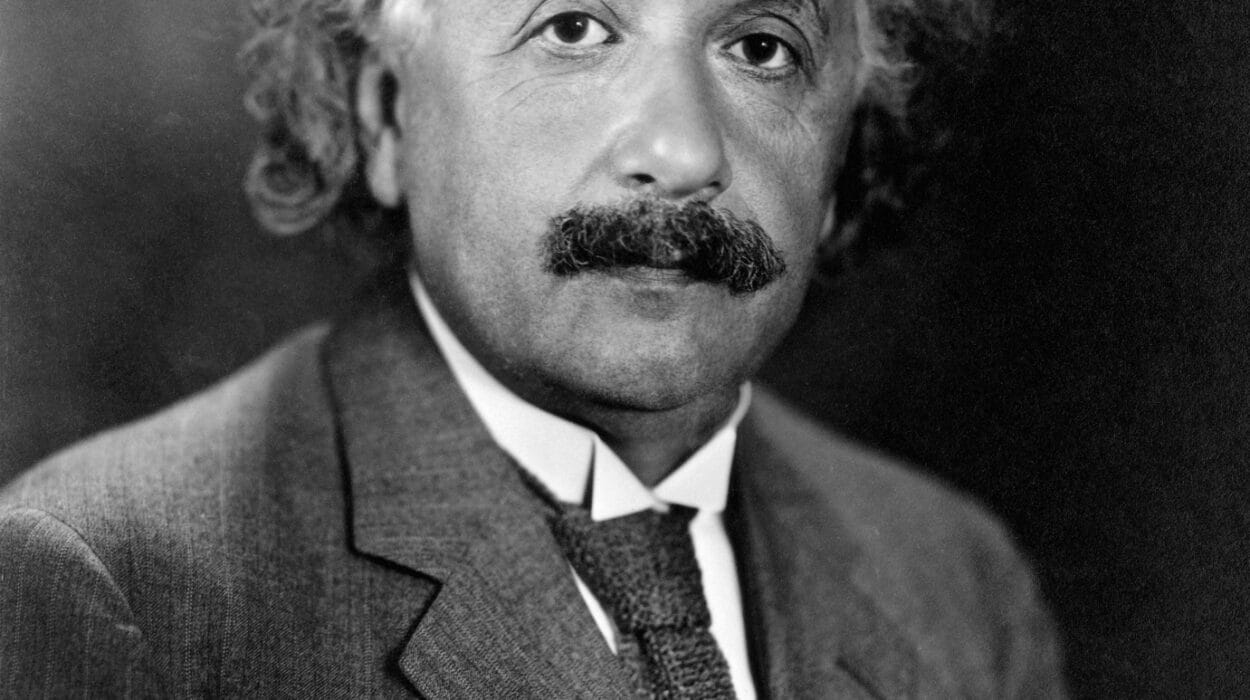More than 200 years ago, the German physicist Thomas Seebeck discovered something seemingly magical: if you heat one side of certain materials while cooling the other, a small but steady stream of electricity appears. No moving parts. No spinning generators. Just heat transformed directly into electrical power. This phenomenon, known as the Seebeck effect, still powers deep-space probes like Voyager today.
But despite its promise, thermoelectric technology has remained stuck in the shadows—too inefficient, too costly, and too niche to compete with the roaring steam turbines that dominate modern power plants.
Now, that may be about to change.
In a new study published in Physical Review X, a team led by Professor Andrej Pustogow at the Institute of Solid State Physics at TU Wien has reported a major breakthrough: a novel class of thermoelectric materials, shaped by atomic patterns known as “Kagome geometry,” can outperform traditional compounds—and do so using metals far cheaper than the rare elements typically required.
It’s a discovery with the potential to transform waste heat—from industrial machinery, car engines, and even human bodies—into clean, usable electricity.
The Quiet Power of Heat
Converting electricity into heat is easy—every toaster and electric stove does it. But going the other way? Turning heat into electricity without first converting it to mechanical energy has long been the domain of thermoelectrics, used in niche applications like powering NASA spacecraft where reliability trumps efficiency.
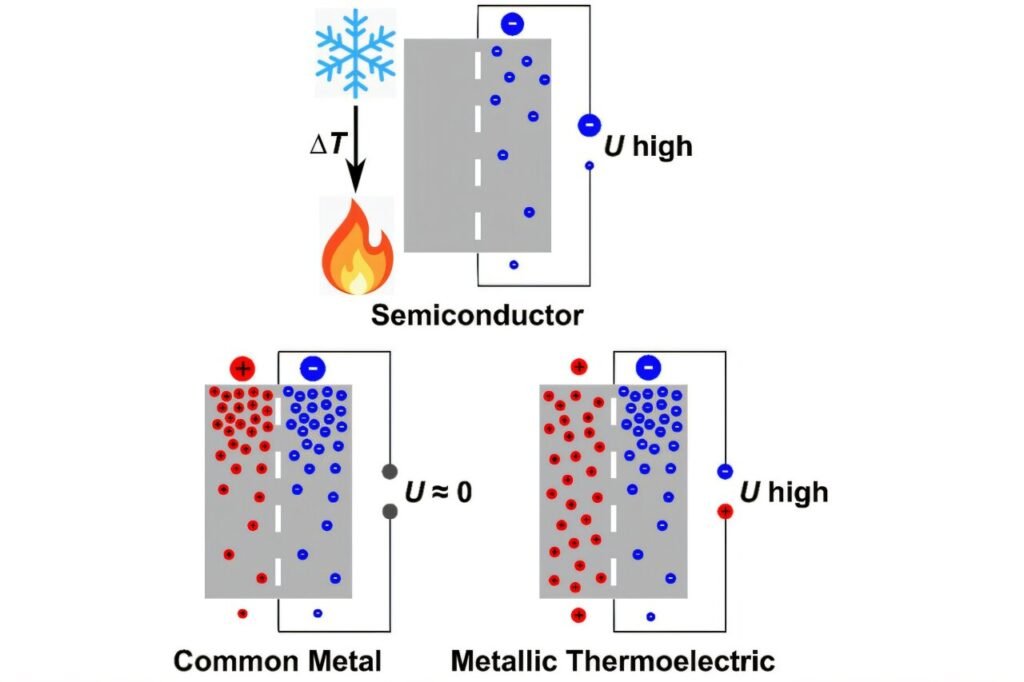
The Seebeck effect, which underpins this process, occurs when a material is hotter on one side and colder on the other. The difference in temperature causes charge carriers—electrons or their positive counterparts, known as “holes”—to move unevenly, creating a voltage.
But there’s a catch: for a material to be a good thermoelectric generator, it must block heat but allow electricity to flow freely. That’s a rare combination. Most good electrical conductors, like metals, are also excellent at conducting heat—which cancels out the effect. Semiconductors like bismuth telluride, discovered in the 1950s, have been the gold standard, but even they aren’t efficient enough to go mainstream.
“We’ve been stuck with the same materials for decades,” said Pustogow. “We realized we needed to think differently—perhaps even embrace metals that were previously dismissed.”
The Metal Nobody Expected
For years, researchers believed metals were poor candidates for thermoelectrics. Because they contain both positive and negative charge carriers that move equally well, any voltage created by one is canceled by the other. It was thought they simply couldn’t produce meaningful electricity from heat.
But what if you could slow one type of carrier down, while letting the other zoom ahead?
“Think of it like a highway,” said Pustogow. “The negative charges are in one lane, the positive charges in another. If we create a traffic jam in one lane—say, by introducing immobile particles—we can slow down the positives while the negatives keep flowing. That imbalance produces electricity.”
In 2023, the team showed this concept could work using expensive nickel-gold alloys. Now, they’ve taken it further—replacing gold with a far cheaper element, indium, and discovering a geometric twist that changes everything.
The Geometry of Frustration
The secret lies in a curious pattern found in both Japanese art and atomic physics: the Kagome lattice.
Kagome, which means “woven bamboo pattern” in Japanese, refers to a distinctive arrangement of hexagons and triangles. Imagine the kind of basket your grandmother might have used to store fruit—now shrink it down to the scale of atoms.
In certain materials, like those made with nickel and indium, the atoms naturally arrange themselves into this Kagome pattern. The result? A phenomenon physicists call “geometrical frustration,” where the usual flow of particles—like heat or electric charge—is blocked or diverted due to the structure itself.
“Charges get trapped inside the Kagome lattice, particularly the positive ones,” explained Fabian Garmroudi, first author on the study. “This creates a natural bottleneck, exactly the kind we need to generate a voltage.”
And the effect isn’t small. The team measured a Seebeck effect in these Kagome metals significantly larger than in most existing thermoelectrics, including the gold-based alloys they previously tested. That means more electricity from the same amount of heat—and at a fraction of the cost.
The Power of Stillness
What makes this breakthrough so compelling isn’t just its novelty—it’s the elegance of the solution. Instead of developing an exotic new compound, the researchers tapped into materials that already exist in nature, with structures shaped not by human design but by atomic physics.
In the Kagome pattern, efficiency arises not from complexity, but from frustration—from particles that want to move but can’t, from geometry that quietly traps motion and turns it into energy.
And unlike traditional systems that require spinning turbines, boiling water, or noisy mechanical parts, this technology is silent, solid-state, and scalable. It could be embedded into the walls of buildings, the hoods of cars, or even wearable electronics—harvesting energy from heat that would otherwise go to waste.
Beyond the Lab
While this discovery is still at the research stage, its implications ripple outward.
Imagine factories that recycle their own heat. Automobiles that convert engine warmth into electricity to power sensors. Remote installations that generate energy without moving parts or sunlight. Or electronics that stay charged simply by existing in a warm environment.
Thermoelectricity has long been the quiet cousin of solar power and wind energy—understood, respected, but rarely celebrated. That may soon change.
“With these Kagome metals, we’ve struck gold—even though we’re not using gold anymore,” said Pustogow with a smile. “It’s a reminder that some of the most powerful ideas come from rethinking old assumptions.”
In an age where every watt counts and every bit of waste matters, finding new ways to transform heat into power isn’t just clever—it’s essential.
And sometimes, the future of energy might just be hidden in the elegant weave of a Japanese basket.
Reference: Fabian Garmroudi et al, Topological Flat-Band-Driven Metallic Thermoelectricity, Physical Review X (2025). DOI: 10.1103/PhysRevX.15.021054
